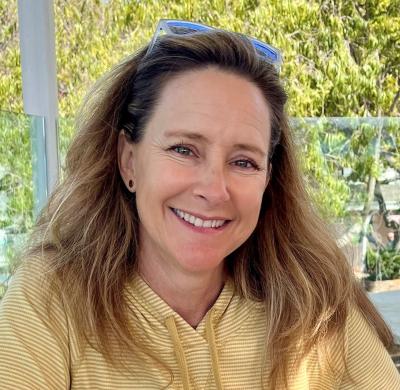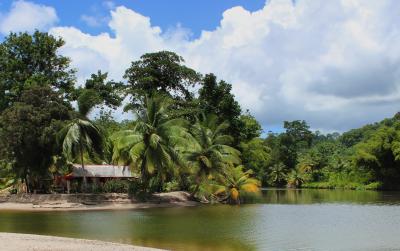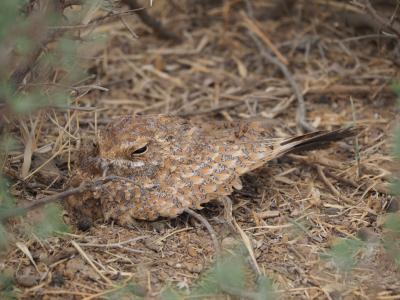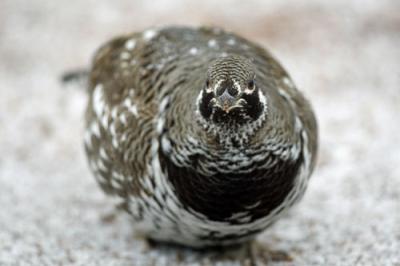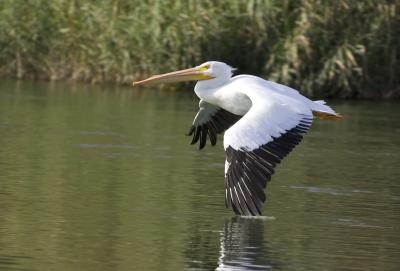Minnesota and North Dakota
North Woods to Prairies
-
May 27 to Jun 4 2026
Ethan Kistler
-
May - Jun, 2027
Ethan Kistler
2026
Single Room Supplement $870
2027
Tour Price to be Determined
2026
Single Room Supplement $870
2027
Tour Price to be Determined
The wonders of the breeding season in Minnesota and North Dakota could well be the best kept secret in all of birding—and with our small group size, we plan to keep it that way! June landscapes are as lush as the birds are conspicuous. From boreal forests to aspen parkland and the grasslands and prairie potholes of North Dakota, this trip covers some of the richest breeding locales in all of North America.
We’ve recorded over two dozen species of ducks and half a dozen grebes, often with adorable babies. Seventeen species of sparrows are possible, including many of the most difficult species to detect in all of North America. The subtle songs and muted plumages of Baird’s, Henslow’s, Nelson’s, and LeConte’s Sparrows are always among the highlights. But perhaps more than any other group, it is the wondrous warblers that draw us time and again to the region. We typically record at least twenty-five species, and unlike watching warblers during migration, our views are often leisurely and prolonged: imagine scope views of Golden-winged or Mourning Warbler, and Connecticut and Canada Warblers singing from near your feet! We are also on the southern boundary for nesting Great Gray Owls, and we’ll spend an evening or two driving the quiet roads in search of this enigmatic species. On another evening, we’ll visit an extensive sedge meadow to listen for what is certainly a good candidate for the most enigmatic species in the country: the nearly mythical Yellow Rail. With great luck, we may even see one. Perhaps best of all, almost the entire tour takes place far from the hustle and bustle of the city, giving us ample time to enjoy the tranquility of the northern forests and prairie potholes and the tremendous birdlife that calls this region home.
Day 1: The tour begins at 6:00 pm at our hotel near the Minneapolis-St. Paul International airport. Night in Bloomington.
Hard to imagine anything that would improve this tour. Perfect! Evan was without a doubt one of the best tour leaders I’ve been with, possibly the best. Sara was great with details and follow-up. - Jeffrey C.
Day 2: Starting in the Twin Cities allows us a morning to look for birds with more southern affinities—species that are pulled north along the Mississippi and Minnesota Rivers. The winding trails of William O’Brien State Park offer a wonderful opportunity to explore this avifauna that we won’t see later on in the tour including Acadian Flycatcher, Blue-gray Gnatcatcher, Wood Thrush, Blue-winged and Hooded Warblers, Eastern Towhee and Field Sparrow. In recent years Henslow’s Sparrow and Cerulean Warbler have been found in small numbers and we’ll hope to see both of these avian gems. A number of productive regional and county parks and nature centers throughout the greater Twin Cities area will give us additional options for birding before we leave in the afternoon for Duluth. Night in Duluth.
Days 3-4: The northwoods of Minnesota are comprised of a rich variety of habitats from jack pine stands to tamarack bogs, from spruce woodlands and alder swamps to hardwood forests, interspersed here and there with sedge meadows and cattail marshes. From our convenient location in the Twin Ports (Duluth and Superior) we’ll head out looking for such highly prized species as Connecticut Warbler, Yellow-bellied Flycatcher and Great Gray Owl.
We’ll spend one morning along the edges of bogs and coniferous forests, where the woods are alive with warbler songs including Mourning, Canada and Blackburnian. Haunting songs of White-throated Sparrow, Hermit Thrush, Veery and Winter Wren echo from inside the bog, while Blue-headed Vireo and Purple Finch often sing nearby. Just north of Duluth is the southwestern limit of Black-throated Blue Warbler, and we’ll search for it along the little-visited portions of Lake County, where we also have a slim chance of finding Philadelphia Vireos. Also in the forests of Lake County, we have excellent chances for Tennessee, Cape May, and Bay-breasted Warblers, all of which are birds of the true Boreal.
Of course, no visit to the Duluth area would be complete without a trip to the Sax-Zim Bog. This is prime habitat for Connecticut Warbler and we’ll concentrate on finding this species. Other summer residents include Boreal Chickadee, Canada Jay, Olive-sided Flycatcher and Golden-winged Warbler. Displaying Bobolink, Eastern Kingbird, Brewer’s Blackbird and perhaps Upland Sandpiper will give us our first taste of the grassland species that we’ll see in abundance later in the trip. We’ll also make an evening excursion to look for Great Gray Owl and we’ll hope to encounter Moose, Fisher, River Otter, Beaver and if we are truly lucky, a wolf. Nights in Duluth.
Day 5: We’ll keep our morning options open and look for species that we haven’t yet encountered. We may visit nearby Rice Lake National Wildlife Refuge, whose deciduous woodlands and scrubby grasslands hold species such as Black-billed Cuckoo, Eastern Wood-Pewee, Great Crested Flycatcher, Scarlet Tanager, Rose-breasted Grosbeak and Clay-colored Sparrow. In the afternoon we’ll make our way to Grand Forks in time to rest up before an evening in search of the enigmatic Yellow Rail. There are a number of locations for this species in this part of the country and, with some luck and current local information, we can hope to at least hear its distinctive call. Nelson’s Sparrows should also be present in numbers and become more vocal at dusk. Night in Grand Forks.
Day 6: We’ll likely do some local birding around Grand Forks in the morning, perhaps finding some lingering shorebirds at Kellys Slough National Wildlife Refuge, or Red-headed Woodpecker and songbirds along the Red River, before making our way on county roads towards Jamestown. We may pass through Arrowwood National Wildlife Refuge, just to the north of town, where we will hope to find Grasshopper Sparrow, Upland Sandpiper, and perhaps more migrant shorebirds. Late in the afternoon we’ll drive to Jamestown, North Dakota. Night in Jamestown.
Day 7: Today we’ll explore the remarkable freshwater marshes and lush prairies of Kidder County. In the marshes and sloughs the guttural pumping calls of American Bitterns and the cacophony of “song” produced by colonies of Yellow-headed Blackbirds fill the air; Black and Forster’s Terns wheel about over their nests among the cattails, and small flocks of Franklin’s Gulls fly between marshes; Ruddy Ducks, one of more than a dozen species of waterfowl that breed here, engage in their unusual courtship displays while Willets, Marbled Godwits and Wilson’s Phalaropes dart back and forth across the meadows; and American White Pelicans and Eared, Western and a few Clark’s Grebes dot the scattered alkaline lakes. This early in the season there are often still some northbound shorebirds including White-rumped Sandpipers. Piping Plovers are sporadic but possible.
In the prairies Chestnut-collared Longspur and Grasshopper, Vesper and Savannah Sparrows will be common and we’ll listen for the tinkling song of Baird’s Sparrow and the elaborate flight song of Sprague’s Pipit. We’ll also hope to see Dickcissel and Lark Bunting although the numbers of these nomadic birds vary from year to year. These open expanses also attract Northern Harrier and Red-tailed, Swainson’s and Ferruginous Hawks, and each year seems to bring a surprise or two. We’ll have a good chance as well for Sharp-tailed Grouse and we’ll scan roadsides for Gray Partridge. Night in Jamestown.
Day 8: This morning we’ll have the option of revisiting the prairies north of the towns of Tappen and Dawson looking for species we may have missed the day before, or concentrating on more intimate looks at species of particular interest. Or perhaps we’ll decide to head east to explore the prairies of western Minnesota en-route to the Twin Cities where Greater Prairie-Chicken is possible. After lunch we’ll begin our drive east toward Minneapolis and if time permits, we may do some target birding before reaching our hotel. Night in Bloomington.
Day 9: The tour concludes this morning in Bloomington.
Note: The information presented below has been extracted from our formal General Information for this tour. It covers topics we feel potential registrants may wish to consider before booking space. The complete General Information for this tour will be sent to all tour registrants and of course supplemental information, if needed, is available from the WINGS office.
ENTERING THE UNITED STATES: Non-U.S. citizens will need a valid passport and may need a tourist visa. Consult your nearest U.S. Embassy or consulate for details. Canadian citizens should carry proof of citizenship in the form of a passport or birth certificate.
PACE OF THE TOUR: We will be rising very early each morning in order to be in the field at or before sunrise (around 5:00 am). There will also be several late evenings during the course of the tour to look for rails and/or owls although such forays will always be optional. We’ll make every effort to mitigate the effects of these long days by scheduling time to rest in our motels before supper.
There will be moderate to long drives between destinations on several days. This time spent in the van can also be used to nap.
Bathroom Breaks: Many areas that we visit have bathrooms and we’ll always take advantage of any that we may pass. During longer drives we pass plenty of opportunities including rest areas and gas stations.
On our early mornings, breakfast bags will be provided by the hotel, and the leader will also have fruit, granola bars, and other breakfast items available in the van for later in the morning. Lunches will either be in restaurants or sandwich shops, or in the form of a picnic in the field, weather-permitting. With unforeseen exceptions suppers will be relaxed sit-down affairs in restaurants near the hotels.
As a rule breakfasts and lunches will either be taken in restaurants or sandwich shops and in good weather, when appropriate, the leader will purchase supplies which will either be eaten while travelling or in the field. With unforeseen exceptions suppers will be relaxed sit-down affairs in restaurants near the motels.
Most walking will be gentle along well-maintained gravel roads and trails. The exception will be for certain species like Connecticut Warbler and Yellow Rail that may require us to walk in damp to wet meadows and bogs. Please note that we do not make this walk every year as it depends upon water levels. If we do venture into the marsh we will be walking in ankle- to knee-deep water across hummocks which will require being able to lift your feet relatively high and set each down again on potentially unstable substrate, balancing ability and stamina (although the pace will be slow). Expeditions into the marsh are always optional and this is not for everybody. There may be the occasional longer walks, especially on the first day, which may be several hours long.
HEALTH: Birdwatching in Minnesota poses no major health hazards.
Insects: Biting insects can be numerous on several of the mornings and evenings with mosquitoes being the major adversary. Those with an allergic reaction to mosquitos may wish to consult their physician. Long sleeves and insect repellents work well to prevent bites. Head nets are generally not recommended as they’re hot and make binocular use very difficult, but you may want to bring one anyway, if you have the space, in case the mosquitos are too bothersome. We can expect to encounter wood ticks in a few locations and deer ticks exist in small numbers in AitkinCounty.
Sun: The days are long, the sun is strong. Wide brim hats and sunscreen are important.
Smoking: Smoking is prohibited in the vehicles or when the group is gathered for meals, checklists, etc. If you are sharing a room with a nonsmoker, please do not smoke in the room. If you smoke in the field, do so well away and downwind from the group. If any location where the group is gathered has a stricter policy than the WINGS policy, that stricter policy will prevail.
CLIMATE: Early mornings may be as cool as 35-40º F (circa 4º C) in some locations with temperatures warming to 65-90º F (18-32° C) during the day. On rare occasions, we have experienced highs only in the 50s F (10-16° C) to as high as 103F. Rain is possible anytime and we can expect it at some point during the tour (though it is usually brief).
ACCOMMODATIONS: We will be staying in comfortable standard hotels throughout the trip, all within close walking distance of a restaurant or restaurants.
Our hotels have good Wi-Fi connections. Cell phone signal is good near our lodging locations but can be intermittent when in the field
FOOD: Food is good American standard. We try to visit a variety of restaurants and cuisines throughout the tour.
Food Allergies / Requirements: We cannot guarantee that all food allergies can be accommodated at every destination. Participants with significant food allergies or special dietary requirements should bring appropriate foods with them for those times when their needs cannot be met. Announced meal times are always approximate depending on how the day unfolds. Participants who need to eat according to a fixed schedule should bring supplemental food. Please contact the WINGS office if you have any questions.
TRANSPORTATION: We will be traveling by leader-driven 15-passenger window van or minivan, depending on the group size. When using 15-passenger window vans, we will take a maximum of seven passengers plus the leader/driver. Participants should be able to ride in any seat in tour vehicles.
Footwear: Sturdy tennis shoes or light- to moderate-weight hiking shoes will suffice for a vast majority of the trip although some may find comfortable hiking boots with firm soles helpful during our walks on gravel roads. There are two schools of thought on dealing with marsh walking. Some opt to use old sneakers which are light and easy to pack and have the advantage of letting the water out as well as in. The water may be chilly, however, and many opt to wear knee-high rubber boots. Be prepared to get a little wet, regardless of footwear. Mornings in North Dakota walking into the grasslands, as well the first morning in the Twin Cities, may also be damp and dewy and some people prefer to wear rubber boots.
PHOTOGRAPHY: Scenery and memory shots will be plentiful and simple to obtain but birds are difficult to photograph. Although there will be occasions when bird photography is possible, a birdwatching tour is not normally the best means of pursuing this aim. “Digiscoping”, on the other hand, is perfectly compatible with the tour, though you should bring your own telescope. If you are a serious photographer, please contact us for further information about photographic possibilities. Camera equipment should be packed in moisture- and dust-proof bags, as a precaution.
Minnesota & North Dakota
2025 Narrative
IN DETAIL:
Our tour began at William O’Brien State Park, just east of the Twin Cities along the scenic St. Croix River. We spent the morning exploring a productive loop trail that winds through grasslands, marshes, and eastern deciduous forest, focusing especially on bird species with southern affinities, many of which become scarce as we travel farther north.
Right from the parking area, we were greeted by our first birds of the day: Willow Flycatcher, Field Sparrow, Marsh Wren, Eastern Towhee, and Indigo Bunting. As we moved closer to the forest edge, we added Ruby-throated Hummingbird, Yellow-throated Vireo, Blue-gray Gnatcatcher, Baltimore Oriole, Rose-breasted Grosbeak, and our first warblers—Blue-winged, Yellow, Common Yellowthroat, and American Redstart. A family of Sandhill Cranes, complete with a young colt, was a special surprise. In the nearby wetland we also encountered Green Heron, Blue-winged Teal, Wood Duck, Alder Flycatcher, and Swamp Sparrow.
Deeper into the woods, our list continued to grow with species like Red-shouldered Hawk, Pileated Woodpecker, Red-eyed Vireo, Veery, Wood Thrush, Scarlet Tanager, and Acadian Flycatcher. Warblers were particularly well represented: Ovenbirds called from nearly every bend in the trail, and we enjoyed excellent views of Golden-winged, Black-and-white, Tennessee, Chestnut-sided, and several Hooded Warblers. Without question, the highlight of the morning was hearing a Connecticut Warbler singing, though it remained out of sight. By the time we returned to our vehicle, we had tallied an impressive 80 species!
After lunch, we headed north toward Duluth. A quick stop at a productive rest area offered not only a welcome break, but also more birds. This eBird hotspot came through with our first Yellow-bellied Sapsucker and Red-breasted Nuthatch, along with a couple of charismatic Franklin’s Ground Squirrels.
With a bit of time before checking into the hotel, we made a stop at Park Point to look for migrants. From the beach, we scoped Bonaparte’s and Ring-billed Gulls, as well as Red-throated and Common Loons. Waterbirds were otherwise scarce, so we shifted our focus to the nearby trees, where we were rewarded with our first Cape May, Blackpoll, and Wilson’s Warblers of the trip, as well as a Least Flycatcher.
After a good night’s sleep, we rose early and made our way to the renowned Sax-Zim Bog for a full day of birding. Although the area is best known for its winter specialties such as finches and owls, it is equally impressive in spring and today we enjoyed our first look at its breeding season birds.
We began the morning by slowly looping a few roads in search of Great Gray Owl. These majestic birds breed in the bog and, with chicks to feed at this time of year, they often stay active longer into the morning. Our patience paid off when we spotted one in an open area right along the road allowing for extended close of views. We stood there and enjoyed watching it hunt and take short flights all the while ignoring our presence.
As if that wasn’t enough it was quickly followed by a Black-backed Woodpecker and a Boreal Chickadee. Other highlights along this stretch included a drumming Ruffed Grouse, Yellow-bellied Flycatcher, Blue-headed Vireo, Canada Jay, Ruby-crowned and Golden-crowned Kinglets, Brown Creeper, White-throated and Lincoln’s Sparrows, and several warblers such as Nashville, Magnolia, Bay-breasted, Blackburnian, and Yellow-rumped. The biggest surprise was a flock of about twenty White-winged Crossbills flying overhead and then dropping into nearby treetops to feed. It is unusually late in the season for them and was a welcomed surprise.
We then visited several productive locations while searching for Connecticut Warbler. Along the way we added Dark-eyed Junco, Palm Warbler, and Black-billed Magpie. It didn’t take long before we heard a distant Connecticut singing. After crossing a small ditch and bushwhacking a few hundred yards, we found ourselves face to face with one, offering some of the best views imaginable. Not the usual views you get of this species when it’s on migration skulking deep within a bush out of view.
Before heading to lunch, we stopped at one of the feeding stations in the bog where Pine Siskins fed at close range. A nearby rest area added a pair of Evening Grosbeaks and several Purple Finches, which rounded out an excellent morning of winter finches.
After lunch we focused on more open habitats including meadows and farmland. There we added Sedge Wren, Warbling Vireo, Clay-colored and Savannah Sparrows, and enjoyed Bobolinks making their best R2-D2 impressions. We also picked up three more warblers: Black-throated Green, Mourning, and Northern Parula.
The next morning, we headed north into Lake County and the Superior National Forest. This remote area of northern Minnesota is often completely devoid of people and holds a few species that are difficult to find in Sax-Zim Bog. Driving along miles of gravel road, we were welcomed by a beautiful dawn chorus. Winter Wren and Hermit Thrush sang from deep within the spruce forests, setting the tone for the morning. The real focus however was warblers. We recorded thirteen species, with Ovenbird, Black-and-white, Tennessee, American Redstart, Magnolia, Chestnut-sided, and Yellow-rumped being the most common. Smaller numbers of Nashville, Mourning, Common Yellowthroat, Northern Parula, Blackburnian, and Black-throated Green were also present. Seeing warblers on their breeding grounds gives a whole new appreciation for these birds watching them sing from treetops defending territories.
On our way to lunch we made a quick stop at a wastewater treatment plant, as birders often do. This produced Northern Shoveler, Gadwall, Redhead, Semipalmated Plover, Spotted Sandpiper, Dunlin, and Least Sandpiper. Among the passerines we also found a Philadelphia Vireo. This species is most likely a migrant since the majority of them breed farther north and remain quite rare as a breeder in Minnesota. A quick visit to Agate Bay in Two Harbors added Greater Scaup and Red-breasted Merganser.
After a delicious lunch at a small coffee shop, we made several stops along the Lake Superior shoreline on our return south toward Duluth. The coastline is wild and scenic here and we added a Peregrine Falcon to our list.
Before dinner we visited the Hartley Nature Center for a relaxed hour of birding through the park. We tallied thirteen species of warblers here as well, including our first Canada Warbler of the trip. We ended the day with a quick visit to Hawk Ridge. Although raptor migration had ended for the season, we were treated to our first Cooper’s Hawk of the trip as it passed overhead.
The following morning, we turned our attention back to Sax-Zim Bog, as we were still hoping to find LeConte’s Sparrow. Shortly after arriving at a promising spot, we heard a couple of Black-billed Cuckoos singing, and one even landed just along the road in front of us. Only a few minutes later, we enjoyed excellent views of a LeConte’s Sparrow right along the roadside ditch. From there we moved on to a scenic bridge over the Whiteface River and added Yellow-throated Vireo, a calling American Bittern, and our second Canada Warbler of the trip. A later stop at a small roadside park produced yet another new warbler for the tour, a Pine Warbler.
We then began the long drive west toward North Dakota and enjoyed watching the landscape gradually change from spruce bogs to transitional forest and eventually to the open expanses of the Great Plains. In western Minnesota we stopped at a rest area that also serves as a productive birding spot. The bathroom area overlooks a large lake that provided our first Franklin’s Gull and Western Grebes of the tour. Upon arriving in Grand Forks, North Dakota, we birded along the Red River, which forms the border between North Dakota and Minnesota. This site is usually reliable for Red-headed Woodpecker, although none were present this year. We shifted our focus to Sertoma Park, a well-known migrant trap in the heart of Grand Forks. While we did not add any new species, we enjoyed views of Green Heron and nine warbler species including Mourning, Magnolia, Blackpoll, and our third Canada Warbler.
After dinner we visited a nearby area of damp grassland and began picking up species typical of open habitats such as Sharp-tailed Grouse, Blue-winged Teal, Western Meadowlark, Grasshopper Sparrow, American Avocet, Marbled Godwit, and Wilson’s Phalarope. Migrant shorebirds included White-rumped and Semipalmated Sandpipers. The highlight of the evening was a Nelson’s Sparrow that came in and showed beautifully at very close range.
After several early mornings and late evenings, we allowed ourselves a bit of rest and enjoyed breakfast at 7 a.m. before heading to Kelley’s Slough National Wildlife Refuge. On the way we had more excellent views of Nelson’s, Clay-colored, Savannah, and Grasshopper Sparrows, along with Marsh and Sedge Wrens.
Before reaching the refuge, we stopped at a flooded field that was hosting a good variety of shorebirds, including our first Sanderlings of the trip. The real surprise was a flyby Least Tern, which represents the first record for the northeastern quadrant of North Dakota.
The refuge serves as an important stopover for waterfowl and shorebirds, and we focused our efforts on scanning the larger lake and surrounding ponds. Although we had already seen most of the locally breeding ducks earlier in the trip, we added our first American Wigeon, Canvasback, and Northern Pintail among large numbers of Blue-winged and Green-winged Teal, Northern Shoveler, and Gadwall. Shorebird diversity was impressive with fifteen species present and between five to six hundred individuals overall. Among a couple dozen Marbled Godwits were eighteen lingering Hudsonian Godwits. Migrant Red-necked Phalaropes outnumbered the locally breeding Wilson’s Phalaropes, a reminder that shorebird migration was still in full swing even in early June. We also recorded Short-billed Dowitcher, Ruddy Turnstone, Stilt Sandpiper, and Baird’s Sandpiper. Other highlights included a few Black Terns and a Vesper Sparrow.
After lunch we started our journey toward Jamestown. Soon we were surrounded by classic prairie pothole habitat, where every rise in the road was followed by another flooded depression filled with ducks, shorebirds, and Yellow-headed Blackbirds. Over the next several hours of driving we encountered Gray Partridge, California Gull, American Coot, Pied-billed Grebe, Swainson’s Hawk, a late Greater White-fronted Goose, and several Upland Sandpipers, one of the signature species of the Great Plains.
A brief visit at Arrowwood National Wildlife Refuge to scan of the reservoir added only American White Pelican and Purple Martin, but our drive to Jamestown was constantly getting longer due to the excellent birding en-route! By now Yellow-headed Blackbirds, Black Terns, and plentiful waterfowl were abundant. Ruddy Ducks were “blowing bubbles” where they display tapping their bill to the water and splashing up bubbles. We also added our first Eared Grebe, Willet, and several late Snow Geese to our growing trip list.
The main objective the next morning was to find one of the star birds of the Dakotas, the Baird’s Sparrow. We made our way to an area in Kidder County that still contains some intact native grassland, which has sadly become rare in modern times. Strong winds were forecast, never ideal for prairie birding, but we pressed on and managed to arrive before the wind picked up. As soon as we stepped out of the vehicle we were greeted by spectacular Chestnut-collared Longspurs. Within just a few minutes we heard the song of a Baird’s Sparrow. Soon after, we enjoyed fantastic views of this highly sought-after species, and a second individual even appeared nearby. Celebrations certainly ensued!
After this early morning success, we headed to a nearby town for breakfast and then continued to Dewald Slough. A few Clark’s Grebes nest here among the much more common Western Grebes, and we quickly located pairs of both for excellent side-by-side comparison.
Next we visited Horsehead Lake WMA, scanning the lake from several vantage points and birding the productive grasslands and farmlands that surround it. Highlights here included Western Cattle-Egret, Snowy Egret, Forster’s and Common Terns, White-faced Ibis, Black-crowned Night Heron, Say’s Phoebe, Brewer’s Blackbird, and excellent views of an American Bittern that had only been heard earlier in the trip. Raptors were also well represented with numerous Red-tailed Hawks, including the pale “Krider’s” subspecies, and a Ferruginous Hawk sitting on a nest.
With no major targets remaining, we made our way back toward Jamestown and checked a couple of local parks. While it is always exciting to see warblers in the boreal forest, there is also something special about finding them out on the prairie. We finished the day enjoying Black-and-white, Tennessee, American Redstart, and Chestnut-sided Warblers right in the middle of North Dakota.
We spent our final full day slowly working our way toward Minneapolis, with several planned stops to break up the drive. In Fargo we picked up another Gray Partridge, a species that has become surprisingly regular in city parks, parking lots, and even backyards. We also added Lark Sparrow to our growing list of sparrow species before heading east into Minnesota. Lake Osakis was our next stop and it hosted several Red-necked Grebes mixed in among dozens of Western Grebes.
Just before reaching Minneapolis, we visited Stanley Eddy Memorial Park, a site known for Cerulean Warblers and the occasional cuckoo. Although late afternoon is not ideal, and we were unable to locate a Cerulean, we still enjoyed a peaceful walk through this beautiful forest. Eastern Wood-Pewee, Red-eyed and Yellow-throated Vireos, Wood Thrush, Ovenbird, and Scarlet Tanager were all singing, creating a wonderful atmosphere. It was a relaxed and fitting end to a very successful tour through Minnesota and North Dakota.
- Ethan Kistler, 2025
Ethan was wonderful. Even among bird guides, his song and call recognition is outstanding. He was on top of everything—birds, territories, schedule, unique places to eat. Would love to go with him again.
- Jean T. on Minnesota and North Dakota
Perfect tour! North Dakota was the biggest surprise. I had no idea how green and lush ND was everywhere we went on the tour. Ethan is an excellent and very knowledgeable tour guide. I have been on 16 previous birding tours with other tour companies, so I know a great guide and Ethan is it!
- George R. on Minnesota and North Dakota
This tour is limited to seven participants with one leader.


























